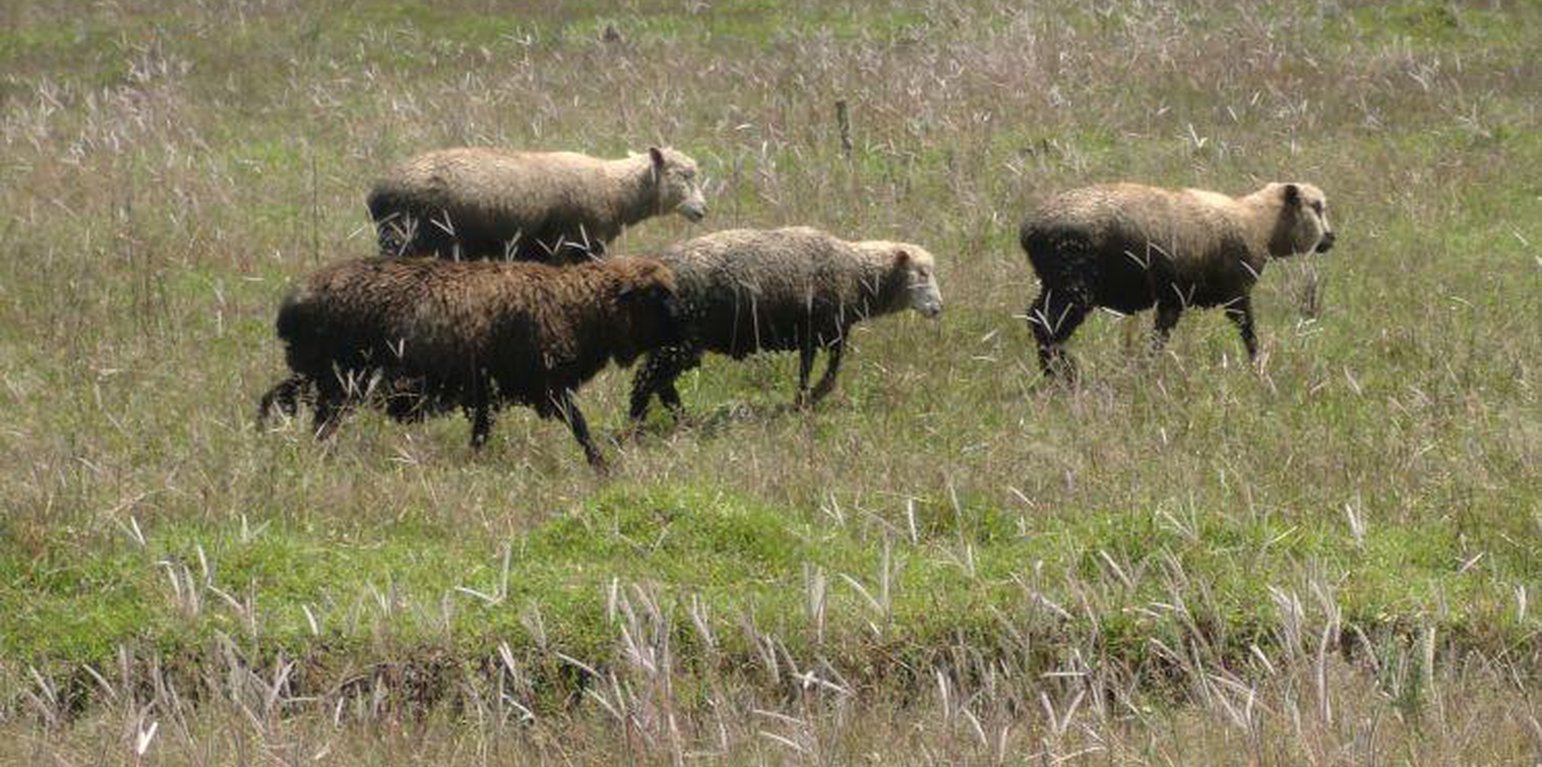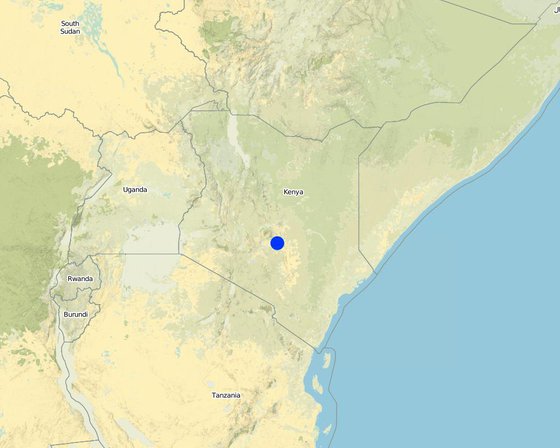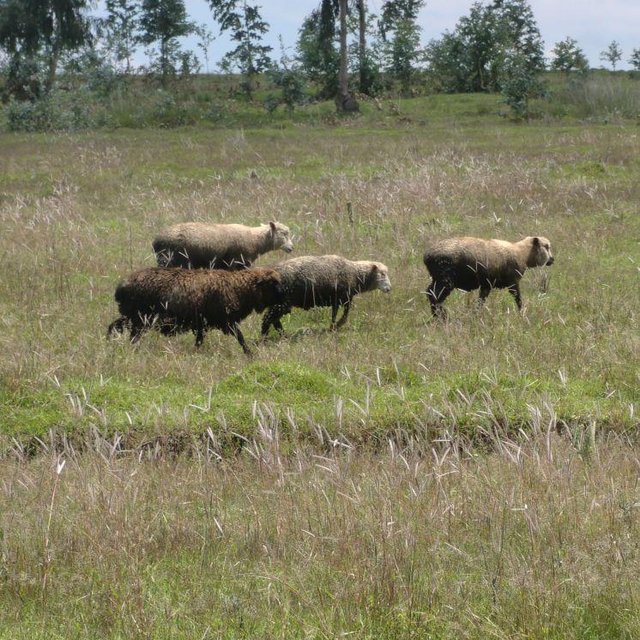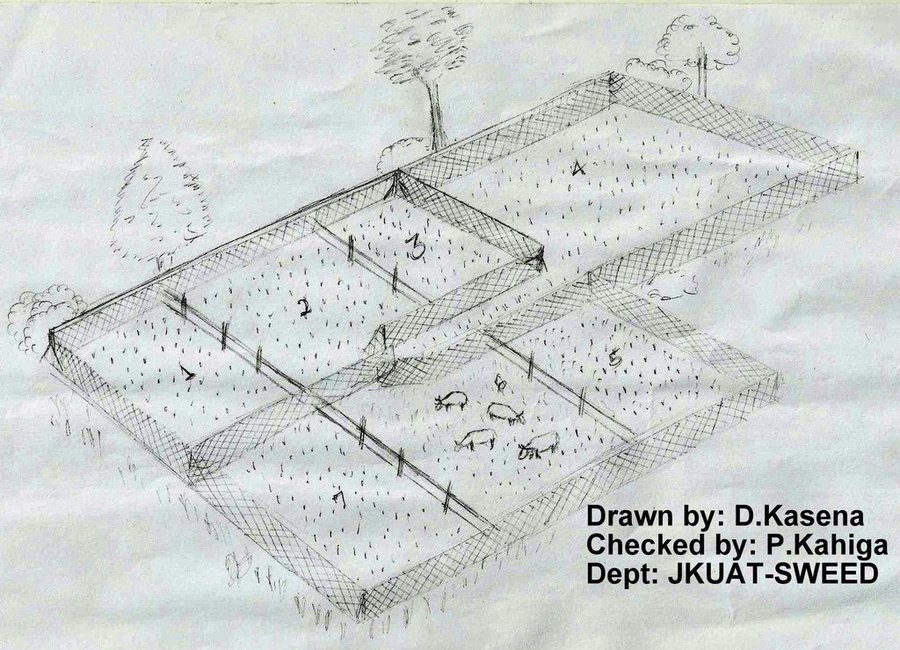



Mbeere South District is relatively dry and farmers have large chunks of land as compared to the Embu North District within the same county. Grazing is done on rotation from one piece of land to another depending on grass availability. Animals are either left to graze freely within the paddock or tethered depending on availability of laborer. In Mbeere South District, when the grass in paddocks gets exhausted, animals are fed on dry maize stalked harvested on the previous seasons. The dry maize stalks (fodder) is usually stored on a raised nest/perch where its covered from rain and sun.
Purpose of the Technology: Using this method cattle are concentrated on a smaller area of the pasture for a few days then moved to another section of pasture. This movement allows the grazed paddock a rest period that permits forages to initiate regrowth, renew carbohydrate stores, and improve yield and persistence.
Establishment / maintenance activities and inputs: When the animals have been shifted to the next paddock, this will allow grass and shrub to grow naturally and at the same time, the farmers are able to do repair of fence and hedge.
Natural / human environment: When utilized properly, rotational grazing can help farmers increase forage productivity. Rotational grazing can help improve productivity, weight gain or milk production per acre, and overall net return to the farm. Rotational grazing allows for better manure distribution that acts as a source of nutrients to the soil. Rotational grazing also has the potential to reduce machinery cost, fuel, supplemental feeding and the amount of forage wasted.

Местоположение: Mbere South District, Eastern Province, Кения
Число исследованных участков, где применяется Технология:
Пространственное распространение Технологии: равномерно-однородное применение на определенной площади (approx. < 0,1 км2 (10 га))
На постоянно охраняемой территории?:
Продолжительность применения Технологии: 10-50 лет назад
Тип внедрения/ применения




| Опишите затраты | Единица | Количество | Затраты на единицу (Kshs) | Общая стоимость на единицу (Kshs) | % затрат, оплаченных землепользователями |
| Оплата труда | |||||
| Labour | ha | 1,0 | 250,0 | 250,0 | 100,0 |
| Оборудование | |||||
| Tools | ha | 1,0 | 200,0 | 200,0 | 100,0 |
| Строительные материалы | |||||
| Nails and barbes wire | ha | 1,0 | 100,0 | 100,0 | 100,0 |
| Wooden post | ha | 1,0 | 50,0 | 50,0 | 100,0 |
| Общая стоимость запуска Технологии | 600.0 | ||||
| Общие затраты на создание Технологии в долларах США | 6.0 | ||||
| Опишите затраты | Единица | Количество | Затраты на единицу (Kshs) | Общая стоимость на единицу (Kshs) | % затрат, оплаченных землепользователями |
| Оплата труда | |||||
| Labour | ha | 1,0 | 200,0 | 200,0 | 100,0 |
| Оборудование | |||||
| Tools | ha | 1,0 | 150,0 | 150,0 | 100,0 |
| Строительные материалы | |||||
| Nails and barbes wire | ha | 1,0 | 50,0 | 50,0 | 100,0 |
| Wooden post | ha | 1,0 | 30,0 | 30,0 | 100,0 |
| Общая стоимость поддержания Технологии | 430.0 | ||||
| Общие затраты на поддержание Технологии в долларах США | 4.3 | ||||
Agricultural land used for grazing
Animals are restricted and don't go to neighbours land
Farmers have benefited from enhanced animal production
Animals don't stray
Animals don't stray